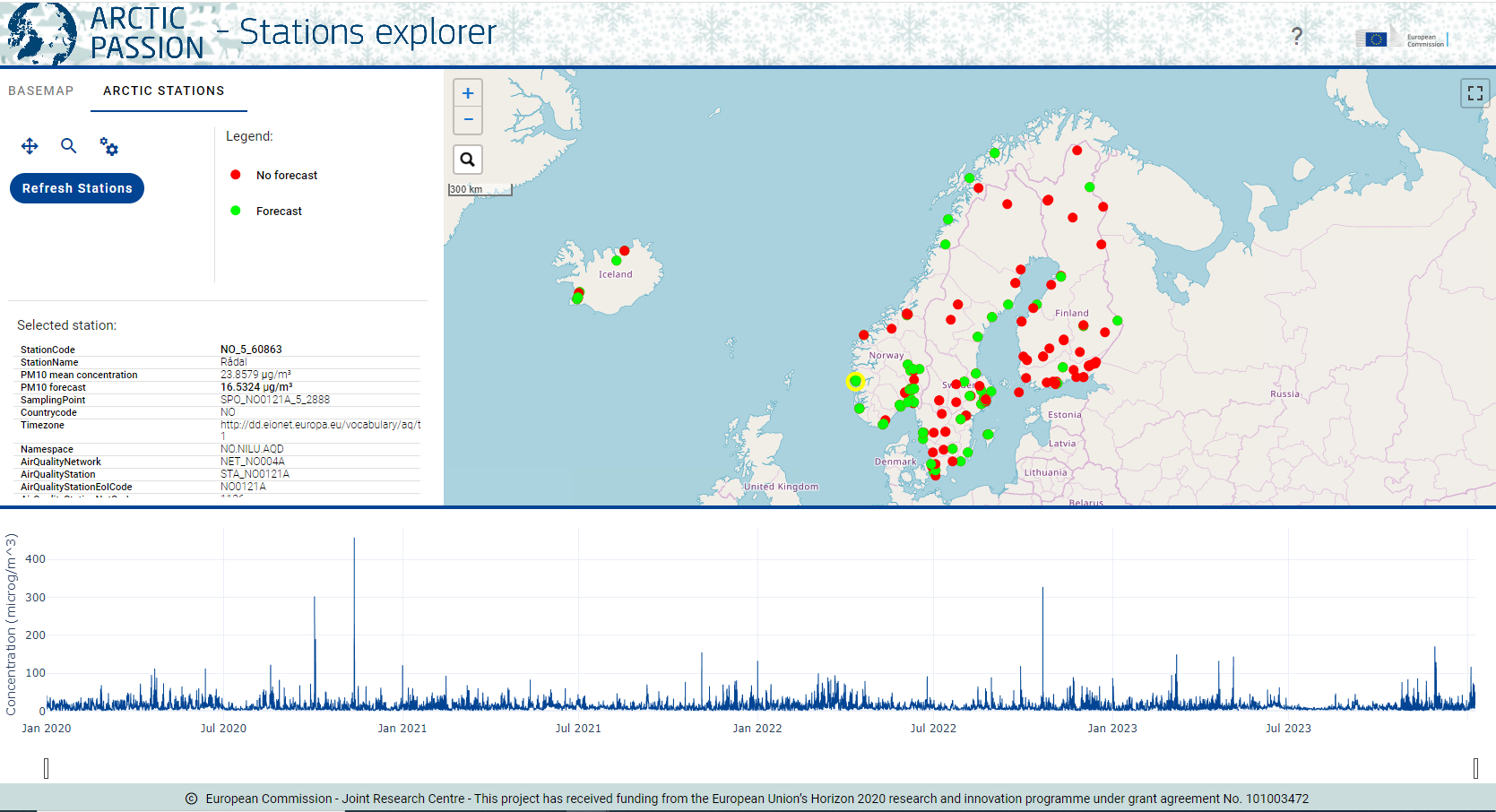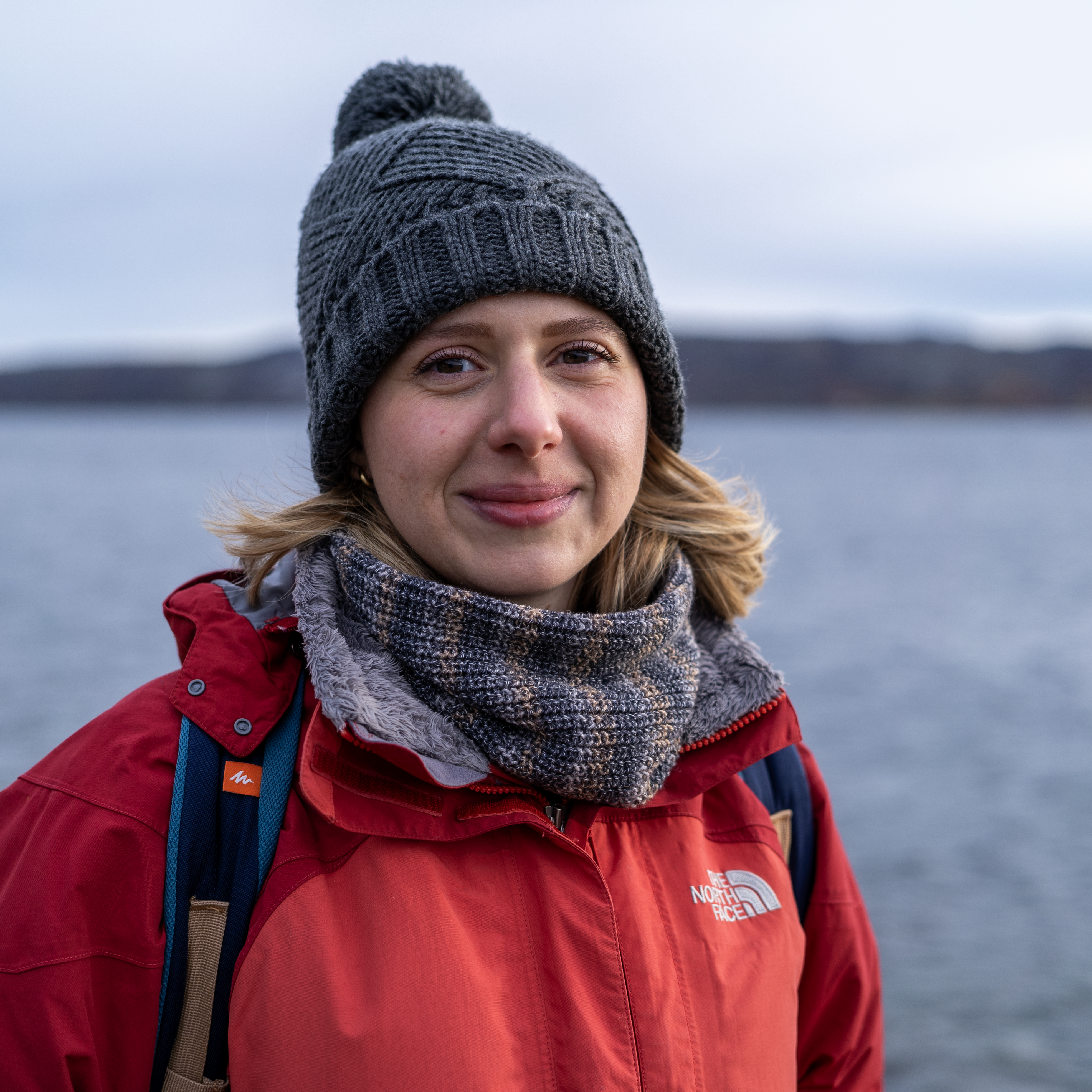The First Showcase Of The Air Pollution Forecast Service
by Ilaria Crotti | Published: 28-Feb-24 | Last updated: 13-Feb-24 | Tags : Airpollution ArcticService | category: NEWS
Ilaria Crotti recently presented a preliminary version of the Local Atmospheric Pollutant Forecast Service to Arctic communities’ representatives, policymakers and other stakeholders at the Arctic Frontiers conference in Tromsø in January 29th- February 1st. Read her introduction to the service and share your inputs via an online form, link provided at the end of the article.
The European Arctic and Northern European countries are usually considered free from the air pollution, which affect severely other southern states such as Italy, Poland and Spain. This is not totally true. A phenomenon, called Arctic haze, typically occurs at northern latitudes, and consists in the accumulation of atmospheric pollution close to the ground due to cold temperatures. The term was coined by M. Mitchell Jr. in 1956, a U.S. Air Force officer stationed in Alaska, but Inuit communities were already familiar with such pollution and used to call it “poo-juk”. Nowadays, air pollution in the Arctic mainly derives from northward transport of air masses from mid latitudes (1) and from local sources such as shipping, extraction activities and metal smelting (2). Global warming, which is affecting northern latitudes at a faster rate in comparison with other areas of the Earth, is increasing the risk of wildfires, boosting anthropogenic activities and increasing population

Arctic haze layer photographed from an aeroplane during the International Polar Year in 2007-8. Photo by A. Wisthaler
Particulate matter (PM) is an atmospheric pollutant that could be found in the Arctic, and consists in a mixture of solids and liquid droplets containing several chemical species such as nitrate, sulfate, organic compounds, and many others. According to the World Health Organization, long term exposure to the particulate with dimensions smaller than 10 µm, called PM10, might cause respiratory problems, cardiovascular diseases and cancer. Taking into account the adverse health effects caused by PM10, an accurate forecast of its concentrations is essential for pollution mitigation and for emergency preparedness in Arctic villages and cites.
The Local Atmospheric Pollutant Forecast Service by Arctic PASSION was developed at the EU Commission’s Joint Research Center in Ispra, Italy, in collaboration with the Italian National Research Council (CNR). It consists of a website that provides PM10 forecast for the following 24 hours for north European countries Norway, Sweden, Finland and Iceland using a novel approach that involves the application of artificial intelligence. The website is designed for a non-scientific audience and is feature an interactive map where communities’ representatives, policymakers and citizens can easily visualize and download PM10 at the selected geographical location.

A preliminary version of the Local Atmospheric Pollutant Forecast Service, featured by an interactive map and the possibility to download historical pollution data and the forecast for the following day.

Ilaria Crotti talked about the importance of the Local Atmospheric Pollutant Forecast Service at the 2024 Arctic Fontiers conference. Photo by Michael Karcher
During the Arctic Frontiers conference, communitiy representatives, policymakers and other stakeholders expressed in an open conversation the need to rely on environmental data that can be trusted, easily accessible, and available in straightforward features such as maps, films and stories. The availability of easy-to-understand data is essential to help policymakers and municipalities in decision-making processes.
Are you living in Norway, Sweden, Finland or Iceland? We are currently improving the service and tailoring it for northern communities. We would appreciate your inputs on the air pollution forecast. Please let us know your opinion and thoughts via on online questionnaire!

The author Ilaria Crotti works as a polar sciences and climate change researcher at the EU's Joint Research Centre in Ispra, Italy. Photo by Olivia Rempel.
See also the Arctic PASSION interview with Ilaria Crotti on our Youtube channel.
References:
- AMAP. (2021). AMAP Assessment 2021: Impacts of Short-lived Climate Forcers on Arctic Climate, Air Quality, and Human Health. Arctic Monitoring and Assessment Programme (AMAP), Tromsø, Norway (www.amap.no).
- Law, K. S., & Stohl, A. (2007). Arctic air pollution: Origins and impacts. Science, 315(5818), 1537–1540. https://doi.org/10.1126/science.1137695
- Schmale, J., Arnold, S. R., Law, K. S., Thorp, T., Anenberg, S., Simpson, W. R., Mao, J., & Pratt, K. A. (2018). Local Arctic Air Pollution: A Neglected but Serious Problem. Earth’s Future, 6(10), 1385–1412. https://doi.org/10.1029/2018EF000952
